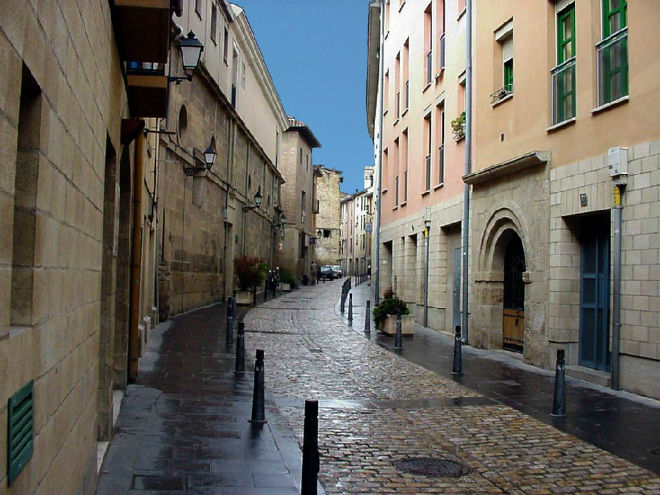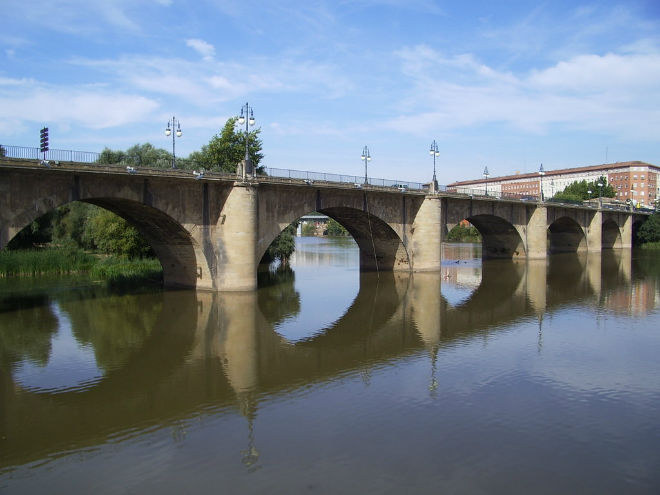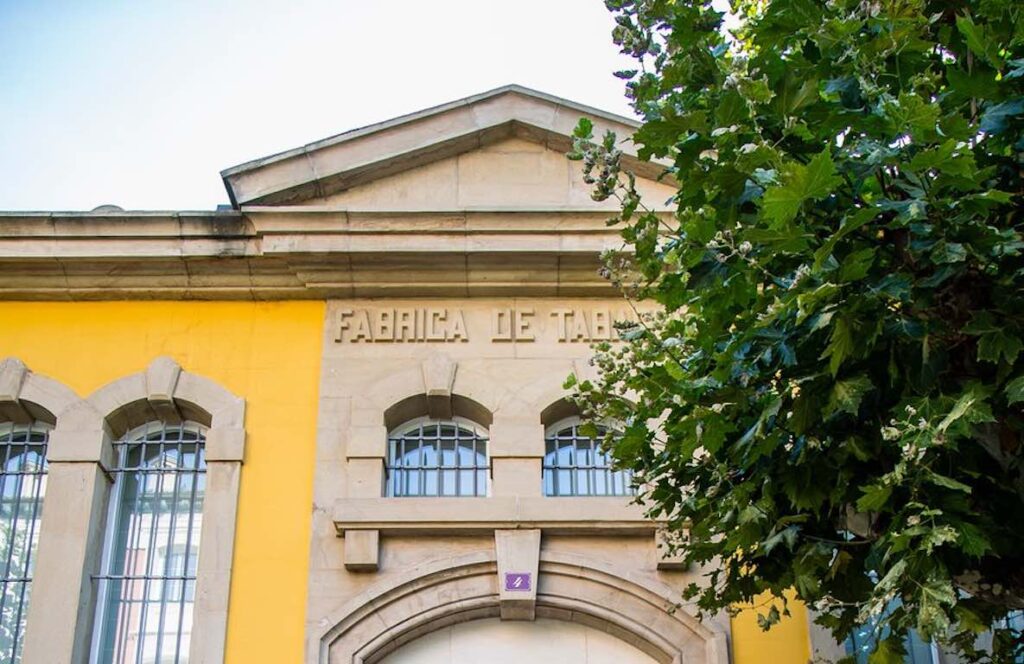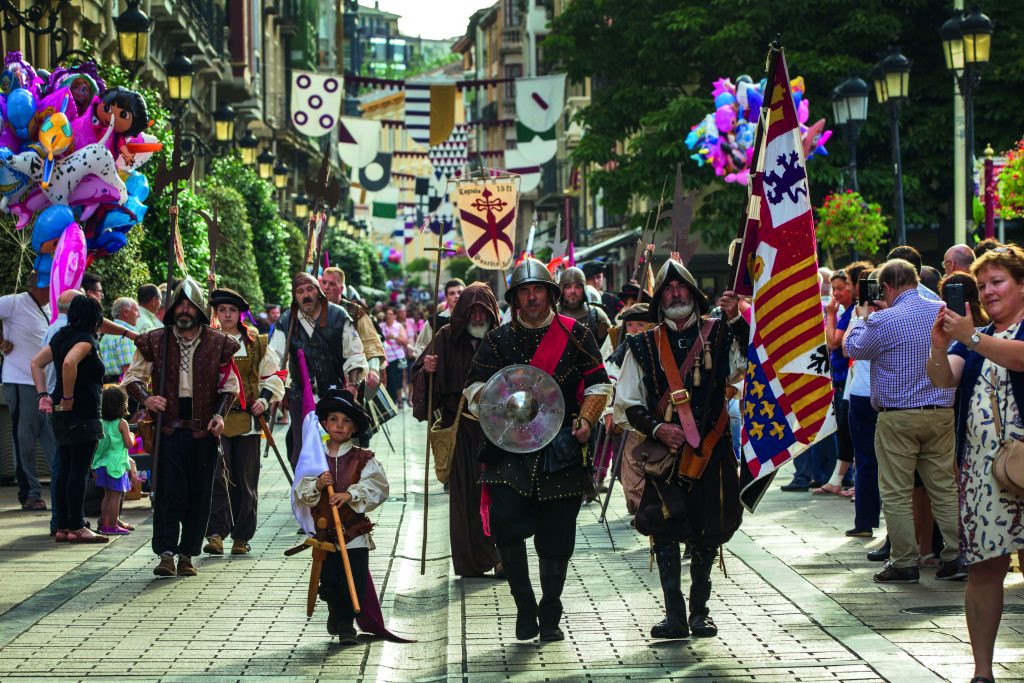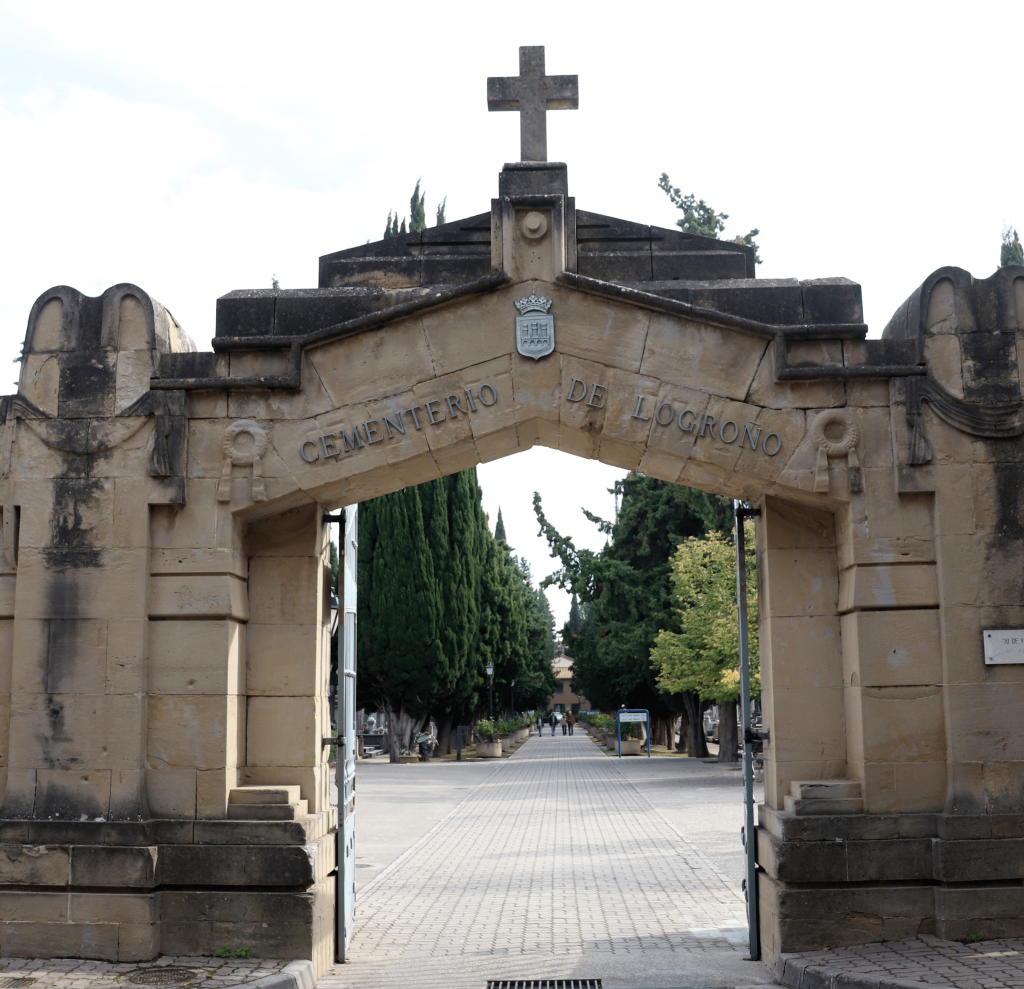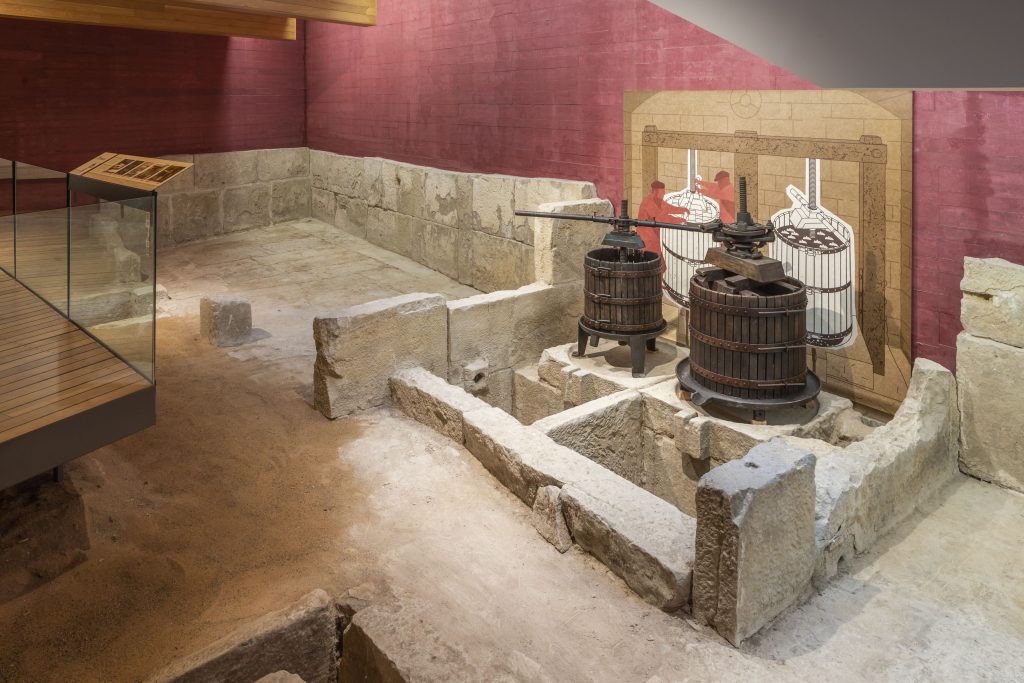We take a stroll through the old quarter of the capital of La Rioja following in the footsteps of the pilgrims who have been a constant presence in the city since the 11th century.
There are many ways to explore the historic centre of Logroño–everyone has their own–, but it is worth following in the footsteps of the millions of pilgrims who, since the 11th century, have stopped in the city to rest on their way to Santiago de Compostela.
The fact that the most famous religious route in the world passes through the capital of La Rioja is due to the Navarrese King Sancho Garcés III The Great, who decided to divert the route of the Way to this area, and Alfonso VI of León, who was responsible for building the bridge that served as the predecessor of today’s Puente de Piedra (Stone Bridge).
It is over this bridge, also known as the Bridge of San Juan de Ortega, that we enter the city. The modern construction, dating from 1884, is the work of Manso de Zúñiga, connecting directly with Calle Ruavieja, the oldest street in the city.
Photo: San Juan Ortega bridge or Stone Bridge.
The coats of arms indicating the lineage of the former owners of each house can still be seen.
This street, full of history, not only serves to discover emblematic buildings, it is also an ideal place to understand the deep relationship between Logroño and wine.
Ruavieja is home to one of the city’s most important wine cellars, San Gregorio, where wine was made in days gone by when this liquid literally flowed through the streets of Logroño.
El interés histórico de este lugar se ha visto reforzado desde la inauguración de la exposición El Camino del vino, una muestra dedicada a explicar la relación existente entre el producto estrella de La Rioja, la ciudad de Logroño y el Camino de Santiago que se inicia en el Ancient wine cellar of San Gregorio y continua en el vecino Lagares Space.
In addition to this attraction, one can find, right in this same street, the municipal pilgrims’ hosteland the hermitage of San Gregorio, built in 1044.
Turning towards Calle San Marqués de Nicolás, we find the church of Santa María de Palacio, built on the site of the old palace that Alfonso VII donated to the Canons of the Holy Sepulchre.
It is the oldest church in Logroño, after San Bartolomé, and is presided over by the impressive “spire” that presides over the skyline of the old town.
You don’t have to walk much further to reach the church of San Bartolomé (12th century) and the Cocathedral of Santa María de la Redonda (16th century).
With their works of great value and architectural beauty, they are two essential places for anyone visiting the city, almost as much as the famous Calle Portales, which, although it reaches its maximum vitality during the summer Fiestas de San Bernabé is also worth a visit on other days of the year.
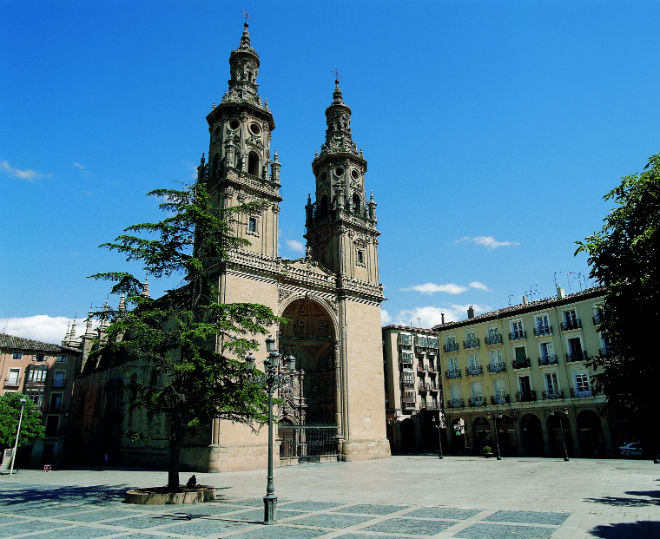
Fhoto: Cocathedral Santa María de la Redonda
Once there, the pilgrim has two options: to go to Calle Laurel or Calle San Juan to rest with a glass of wine in hand or to go in the opposite direction towards Barriocepo, where you can visit the church of Santiago el Real and Game of the Goose square, located on the site of the old prison of the city.
This square also features the Pilgrim’s Fountain, built in stone, under a segmental arch between two pillars and decorated with the pilgrim’s shell, the symbol of the Way.
Continuing along Calle Barriocepo, we come across the headquarters of Fundación Dialnet, the former home of the Inquisition, which is now recognisable from afar by the impressive Sello Tattoo mural, the work of Rioja natives Carlos Corres and Carlos López Garrido.
It is a representation of an elderly pilgrim with his body covered with the seals that accredit him as a tireless walker, one who, by dint of walking, has managed to reach galaxies far away, as shown by the stamp with Darth Vader’s face in the middle of his chest.
Barriocepo never tires of offering places of interest and continuing walking along it, we reach the imposing Rioja parliament and the Revellín Wall, the place where the old pilgrims used to say goodbye to Logroño to continue on their way to Nájera.
Esta fortificación cuenta con un cubo artillero, el famoso Cubo de Revellín, construido tras el fin del sitio de Logroño de 1521, cuando las tropas franconavarras trataron de hacerse con la ciudad.
Hoy en día, descartada la posibilidad de nuevas invasiones, este espacio sirve de museo, un museo que se vió transformado y actualizado en motivo del 500 aniversario de una de las hazañas más destacadas de la historia de la ciudad.
Foto: Sala Amós Salvador
Una transformación similar, la de pasar de ser una equipamiento militar a servir como espacio para la cultura y la divulgación, afectó también a la Amós Salvador Hall, que, en el proceso, sirvió como convento, cárcel y fábrica de tabacos, ejerciendo hoy el papel de museo municipal especializado en arte contemporáneo.
It might seem like it’s time to leave, but you can’t leave the provincial capital with the most bars per capita without stopping to enjoy Logroño’s gastronomy between glasses of wine, especially if it belongs to Spain’s oldest designation of origin.
To do so, any place is good; the list of recommendations would be too long for this humble article.

